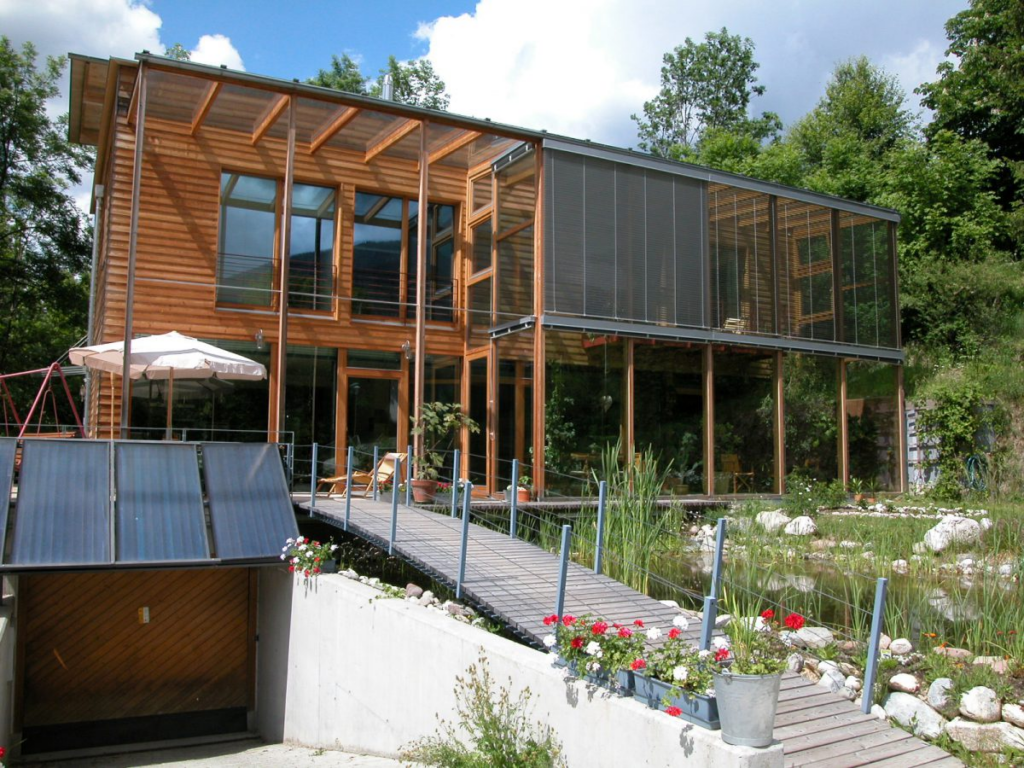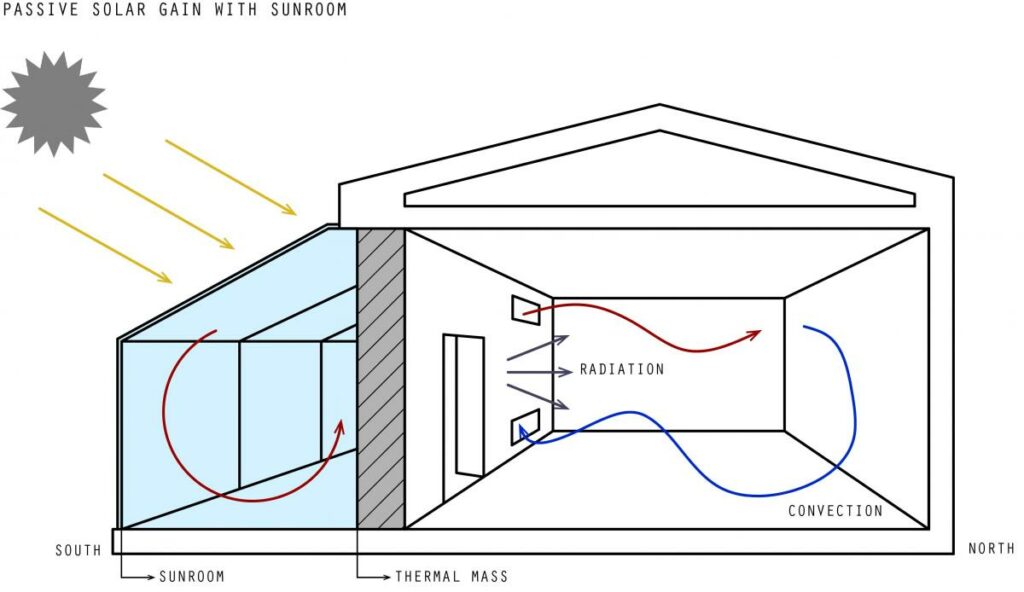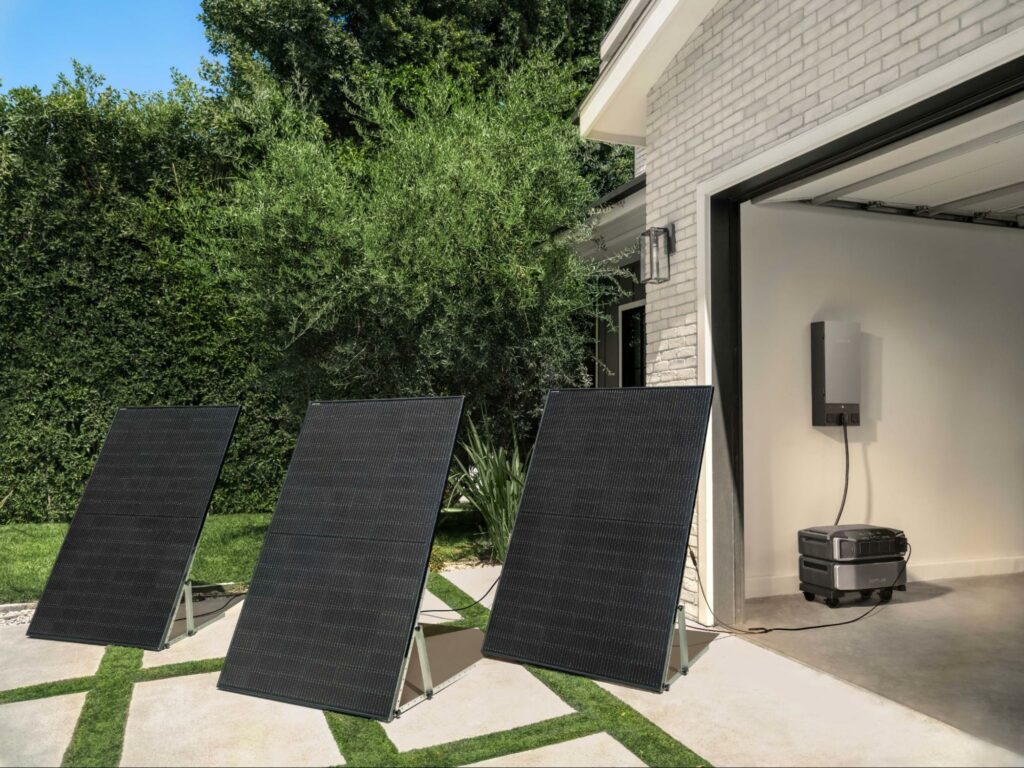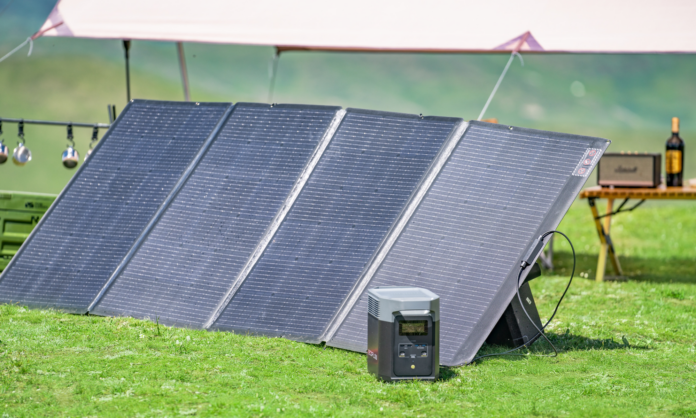Table of Contents
Solar power is the world’s fastest-growing renewable source of electricity generation and a crucial component of the transition toward a decarbonized future.
But how does it actually work?
And what’s the difference between passive and active solar energy?
Both active and passive solar power are produced by harnessing energy from sunlight to generate electricity or heat.
Passive solar energy refers to a specific type of home design that captures and stores thermal energy from sunlight.
Active solar energy can also refer to thermal energy systems that utilize the sun’s heat.
But it’s far more frequently used to describe solar power systems that generate electricity from visible light — not heat.
Let’s focus on electricity generation first, then move on to passive and active solar thermal heating systems.

(Source: Energy Education)
What Is Solar Energy?
Solar energy consists of light and heat produced by nuclear fusion reactions inside the sun, which travel through space and penetrate the Earth’s atmosphere.
Only about half of the incoming electromagnetic radiation from the Sun reaches the Earth’s surface.
Without solar energy, life as we know it would not exist.
Aside from driving photosynthesis, climate, and precipitation, humans have long harnessed solar energy, employing both primitive and highly sophisticated technologies.
A prime example of modern active solar energy use is generating direct current (DC) electricity using the photovoltaic effect.
Photovoltaic (PV) modules — most commonly solar panels —utilize monocrystalline or polycrystalline silicon photovoltaic cells.
Other types of solar panels exist, but over 90% of PV modules worldwide use silicon wafer based solar cells.
Solar panels typically consist of multiple PV cells housed under a transparent protective surface like tempered glass and framed in aluminum or stainless steel.
Within each cell, two semiconductor layers — p-type and n-type — create a p-n junction.
When visible light strikes the junction, the resulting electric field drives the flow of electrons, generating direct current electricity.
Highly conductive metal contacts collect and carry the charge, completing an external electrical circuit.
The DC electricity is then transmitted to a solar inverter for immediate use or a charge controller for solar battery storage.
Residential photovoltaic applications require a portable power station or other balance of system to convert DC to alternating current (AC) electricity for household consumption.
Most people think of photovoltaic systems that generate electricity when they think of active solar energy.
However, there’s more than one way to harness solar energy.
It doesn’t require PV modules — it’s all about heat.

(Source: 2030Palette)
What Is Passive Solar Energy?
Unlike photovoltaic (PV) systems, passive solar energy doesn’t require solar panels, inverters, or other balance-of-system components.
Instead, passive solar design focuses on capturing thermal energy from peak sunlight and storing heat using materials with high thermal mass, such as brick, stone, and water.
Passive solar energy can heat your home in the winter and help keep it cool in the summer.
Here’s what you need to make it work.
- South-Facing Windows (Aperture): For effective passive solar heating, your home should have south-facing windows unobstructed by shade during daylight hours, roughly between 9 a.m. and 3 p.m. However, the windows must also be shaded during the cooling season, typically summer and parts of spring and fall. Ideally, your windows should be positioned within 30 degrees of true south.
- Sunlight Control: Depending on various factors — including the time of day and the time of year — you will likely require one of several mechanisms to control the amount of sunlight coming in through your south-facing windows. Control is crucial during summer when you don’t want your thermal mass to collect passive solar energy. If unshaded, it will continue to heat — not cool — your home. Typical passive solar control methods include awnings, blinds, and shudders. For a more permanent solution, an intentionally designed overhang can allow sunlight in during the winter and block out the summer sun.
- Thermal Mass is required to capture the sun’s energy during winter and other times when you need to heat your home. During the hotter months, thermal mass can retain heat from warm air in the house, helping to reduce the ambient temperature overall. Thermal mass can consist of common building materials like bricks, concrete, and tiles. Other options for thermal mass include water and phase change materials (PCM). Painting solid thermal mass in darker colors can help the available surface area (absorber) capture more heat.
- Distribution: Once your thermal mass retains passive solar energy from your south-facing windows, it must be distributed throughout the rest of your home to keep it warm. While true passive solar heating relies on three natural means of distribution (sometimes just one, often all three): radiation, convection, and conduction, many designs also incorporate fans or other blowers to enhance air circulation.
Passive solar energy alone will rarely be sufficient to fully heat or cool a home year round — especially in climates with extremes of heat and cold. Additional HVAC systems will almost certainly be required. But, correctly designed, passive solar systems can be a cost-effective way to at least partially heat or cool your home.
The design of a passive solar system also requires choosing between direct, indirect, or isolated gain approaches, each with its own advantages and disadvantages.

(Source: OSU)
Isolated gain is a passive solar system often found in new homes and commercial buildings. This approach relies on a sunspace (or solarium) to collect sunlight, which is then stored in thermal mass and distributed throughout the building.
Sunspaces can be added to existing homes, although many properties lack a suitable location that meets all the requirements for effective passive solar design.
(Source: Energy.gov)
What is Active Solar Energy?
Unlike passive solar energy, which relies on building design to capture sunlight, active solar energy systems use technology to dynamically collect, concentrate, and convert solar energy into usable forms — like electricity or heat.
While photovoltaic (PV) systems that generate electricity from sunlight are the most widespread application, active solar encompasses a broader range of processes, including systems that focus on capturing and utilizing thermal energy from the sun.
PV systems primarily use visible light from the solar spectrum as “fuel,” and solar panel efficiency actually declines in extreme heat — particularly in temperatures of 95°F (35°C).
For example, solar farms in India enjoy high solar irradiance — which is beneficial for electricity generation — but also high ambient temperatures, which causes solar panel efficiency to decrease.
As a result, significant resources are expended to cool PV modules and increase efficiency in extreme heat.
Active solar energy systems that don’t generate electricity but instead capture and utilize thermal energy are fueled by infrared (IR) radiation from sunlight — better known as heat.
(Source: Penn State)
Active solar thermal systems differ from passive solar building designs in that they use additional technology and equipment to capture, store, and circulate heat.
Liquid-based active solar heating systems are the most common and are typically used in residential buildings to provide central heating.
Solar water heaters are another widespread application of active solar thermal energy, and the principles behind both systems are similar.
- Collecting Heat: Flat-plate collectors may look deceptively like solar panels, but they don’t use the photovoltaic effect to generate direct current electricity. Instead, solar thermal panels collect heat. No photovoltaic cells are used, and the construction of flat-plate collectors is quite simple. Often, a collector is essentially a large sheet of copper or aluminum painted or chemically treated to be black — enabling it to capture more solar energy as heat.
- Heat Transfer: Thermal solar energy captured by flat-plate (or other) collectors is used to heat a liquid — typically water or antifreeze. Once the fluid absorbs sufficient heat, a circulating pump transfers the hot liquid for storage or immediate use.

(Source: Rethinking the Future)
- Central Heating and Storage: If the active solar energy collected is used to heat your home immediately, the hot liquid will be directed to a heat exchanger that converts it into hot air. The heated air is then circulated throughout your home using conventional methods like heating ducts and radiators or less traditional means like a radiant floor heating system.
Thermal solar energy that’s not immediately required can be stored in hot water tanks or radiant slab systems for later use.
Other methods of active solar heating include room air heaters, transpired air collectors, and ventilation preheating.
Pros and Cons of Passive vs. Active Solar Energy
While solar energy is often associated with generating electricity, using the sun’s energy to heat your home is another viable — potentially more affordable — alternative.
Comparing solar thermal systems to photovoltaic systems is like comparing apples to oranges — one collects heat, and the other generates electricity.
Instead, let’s examine how the benefits and disadvantages of active versus passive solar heating systems compare for home heating.
Passive Solar Systems for Home Heating
Pros:
- Thoughtful design and conventional building materials like glass, brick, concrete, or tiles can be sufficient to achieve your goals, resulting in a low initial cost.
- Reduced Reliance on Purchased Fuel or Electricity: When properly designed, passive solar can significantly reduce heating and cooling bills
- No solar panels or sophisticated balance-of-system components are required.
- Elements can be seamlessly integrated into the architectural design of a new home with little or no negative impact on aesthetics.
- Zero carbon emissions during operation
- Noise-free operation.
Cons:
- Effectiveness is heavily dependent on climate, orientation, and building design. Poor design can lead to overheating or underheating.
- Difficult or impractical to retrofit effectively in existing homes.
- Unlikely to meet all heating or cooling needs. Auxiliary HVAC systems are almost always required.
- Indoor temperatures can fluctuate more than in homes with conventional HVAC systems, especially during cloudy periods.
- Thermal mass doesn’t store heat for extended periods (compared to active systems with dedicated storage), leaving you heavily reliant on available sunlight.
- Overheating in the summer without proper sunlight control (shading) is a frequent complaint.
Active Solar Thermal Systems for Home Heating/Hot Water
Pros:
- Potential long-term savings on utility bills, especially in sunny climates with high heating demands.
- Federal tax credits and other state or local incentives can reduce upfront costs for eligible solar thermal and solar photovoltaic systems. Some active solar water and space heating systems may qualify for the Energy Efficient Home Improvement Credit and/or the Residential Clean Energy Credit.
- Clean, renewable energy source with minimal environmental impact.
- Long lifespan with minimal maintenance. Periodic replacement of some components should be expected.
- Versatility: Can heat both your water and your living space.
- More retrofit options for existing homes than passive solar systems.
- More predictable performance and less dependent on building design than passive solar.
Cons:
- High Upfront Cost: Systems can be relatively costly to purchase and install.
- Only provides heating for your living space and/or water. No cooling.
- A supplementary or backup heating source is typically required, especially during extended periods of low solar irradiance, which often occurs in cold winter months.
- Routine maintenance is needed to ensure optimal performance.
- Freezing damage can occur if adequate protection measures are not implemented.
- Solar collectors can be visually unappealing, negatively impacting building aesthetics.
- It requires sufficient roof or ground space for the installation of solar collectors and storage tanks.
- Building code and permitting restrictions likely apply.
Key Differences Between Passive and Active Solar Systems
Both active and passive solar systems harvest energy from the sun’s electromagnetic radiation and put it to use, primarily to generate electricity or to capture, control, or concentrate heat.
However, there are significant differences between how active and passive solar systems achieve their goals.
Passive solar energy systems DO NOT generate electricity.
The comparisons below are relevant to active and passive solar thermal heating and cooling systems.
- Energy Source & Capture
- Passive systems rely on building design and orientation to capture solar energy.
- Active Systems require sophisticated electronic and mechanical components to collect, store, and convert solar radiation to usable heat.
- Design vs. Technology
- Passive heating and cooling systems leverage common building materials like bricks and glass alongside sustainable design principles.
- Active solar thermal systems use mechanical and electrical components like solar collectors, pumps, and fans to collect and distribute heat.
- Energy Distribution
- Passive: Utilizes natural heat transfer processes (convection, conduction, radiation).
- Active systems require auxiliary devices like pumps and fans to distribute heat.
- Complexity
- Passive systems are easier to design and integrate into the structure of a new building.
- Active: Complex, requiring specialized knowledge to design, install, and maintain.
- Upfront Cost
- Passive solar energy systems typically cost less upfront to design and integrate into new homes.
- Active systems require more substantial investment due to additional equipment and installation costs.
- Maintenance
- True passive solar systems typically don’t require any routine maintenance as they’re built into the structure of the home.
- Active solar thermal systems have many moving parts and require periodic maintenance to help ensure longevity and optimal performance.
- Applications
- Passive solar systems are used for space heating, cooling, and natural lighting.
- Active solar thermal systems are primarily used for water and space heating. Photovoltaic modules like solar panels that generate electricity from sunlight and utilize a balance of system to convert direct current to household power are also considered active solar energy systems.

Frequently Asked Questions
It depends on your goals. Photovoltaic systems that generate electricity from sunlight use active solar technology, typically solar panels. If your goal is to heat or cool your home, passive solar energy can be effective and inexpensive to integrate into new buildings. Active solar thermal systems are easier to retrofit and can heat space and/or water. There is no passive solar energy system that generates electricity.
Passive solar energy systems rely on building design and readily available materials with high thermal mass—like brick, water, and stone—to capture and naturally control thermal energy from sunlight (heat). Active solar energy systems use sophisticated technology to generate electricity (solar photovoltaics) or to actively capture and circulate heat (solar thermal).
Passive Solar can offer simple, low-cost integration into new builds using conventional materials for natural heating and cooling. It’s design-dependent and provides limited energy storage. Supplemental heating is usually needed. Active solar heating is retrofittable to existing homes and provides precise control via collectors and distribution systems. Sophisticated components and technology are required, leading to higher initial costs. Active and passive solar heating systems do not generate electricity. For that, active solar photovoltaics are required.
The best-known example of active solar energy is using photovoltaic modules — typically solar panels — to capture the sun’s rays and convert them into AC (household) electricity. Active solar heating is another application that doesn’t require PV modules but relies on other technology to capture the sun’s heat. Passive solar heating doesn’t need much technology — it’s all about the design and construction of your home.
Final Thoughts
Many people believe photovoltaic (PV) systems using solar panels are the only type of solar energy applications.
However, passive and active solar thermal systems can be financially viable, eco-friendly alternatives to electric and fossil-fuel-powered space and water heating.
Passive solar thermal systems can also help cool, but supplemental HVAC systems are almost always required.
Active and passive solar heating systems can save you significant amounts of money on heat supplied by utility companies — especially if you’re building a new home and designing it with passive solar in mind from the outset.
If you’re interested in active solar photovoltaic energy systems that can generate enough electricity to power your entire house off-grid, check out EcoFlow’s whole home backup generator solutions.
EcoFlow has a wide variety of active solar photovoltaic and battery systems to meet every need, from backpacking to living off-grid
Check out our selection today.
